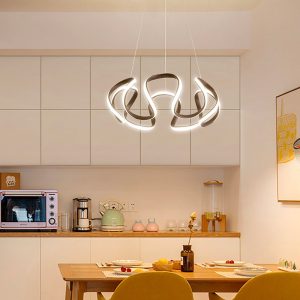Kitchen Overhead Lights: Illuminating Your Culinary Creativity
Introduction
Kitchen overhead lights are an essential component of any modern kitchen. They not only provide illumination for performing tasks such as cooking and cleaning, but also add to the overall aesthetic appeal of the space. In this article, we will take a closer look at the importance of kitchen overhead lights and discuss some of their key features.
Importance of Kitchen Overhead Lights
Kitchen overhead lights allow you to see what you are doing while cooking or cleaning in the kitchen. Proper lighting is critical for performing tasks such as chopping vegetables, reading recipes, or washing dishes. Inadequate lighting can lead to eye strain, headaches, and even accidents.
Moreover, kitchen overhead lights can enhance the look of your kitchen, depending on the style and design you choose. They can complement the cabinet colors, backsplash tiles, and flooring materials, adding a touch of elegance to the overall kitchen interior.
Types of Kitchen Overhead Lights
There are several types of kitchen overhead lights available, including:
1. Pendant Lights
Pendant lights are a popular choice for modern kitchens. They are commonly used above kitchen islands or dining tables, adding a stylish touch to the space. Pendant lights come in a variety of shapes, sizes, and colors, allowing you to choose the perfect one that complements your kitchen décor.
2. Chandeliers
Chandeliers, traditionally used in dining rooms, can also be used in modern kitchens as overhead lights. They are available in various sizes, from small to large, depending on the size of your kitchen and ceiling height. Chandeliers can add a touch of elegance and sophistication to your kitchen décor.
3. Recessed Lights
Recessed lights, also known as can lights, are installed into the ceiling, providing an unobtrusive overhead lighting solution. They are available in different sizes and shapes, and can be used as the sole source of kitchen lighting, or in conjunction with pendant or chandelier lights.
Key Features of Kitchen Overhead Lights
When choosing kitchen overhead lights, there are certain features you should consider, such as:
1. Bulb Type
There are several types of bulbs available, including LED, incandescent, and fluorescent. LED lights are energy-efficient and have a longer lifespan than traditional bulbs. Incandescent bulbs are the most common type, but they are less energy-efficient than LED bulbs. Fluorescent bulbs are also energy-efficient, but they are more expensive and have a longer start-up time.
2. Color Temperature
The color temperature of a light bulb is measured in Kelvin (K). Warm white (2700K-3000K) is a soft, yellowish light that creates a cozy atmosphere. Cool white (3500K-4100K) is a brighter, whiter light that is ideal for task lighting. Daylight (5000K-6500K) is a bright, bluish light that mimics natural daylight and is ideal for kitchen workspaces.
3. Dimming Options
Dimming options allow you to adjust the brightness of your kitchen overhead lights. Dimmer switches are available for most types of lights, including pendant, chandelier, and recessed lights. Dimming options are convenient when you want to set the mood or reduce the amount of light in the kitchen.
Conclusion
In conclusion, kitchen overhead lights are an essential component of any modern kitchen. They provide vital illumination for performing kitchen tasks and add to the overall ambiance of the space. When choosing kitchen overhead light fixtures, consider factors such as bulb type, color temperature, and dimming






